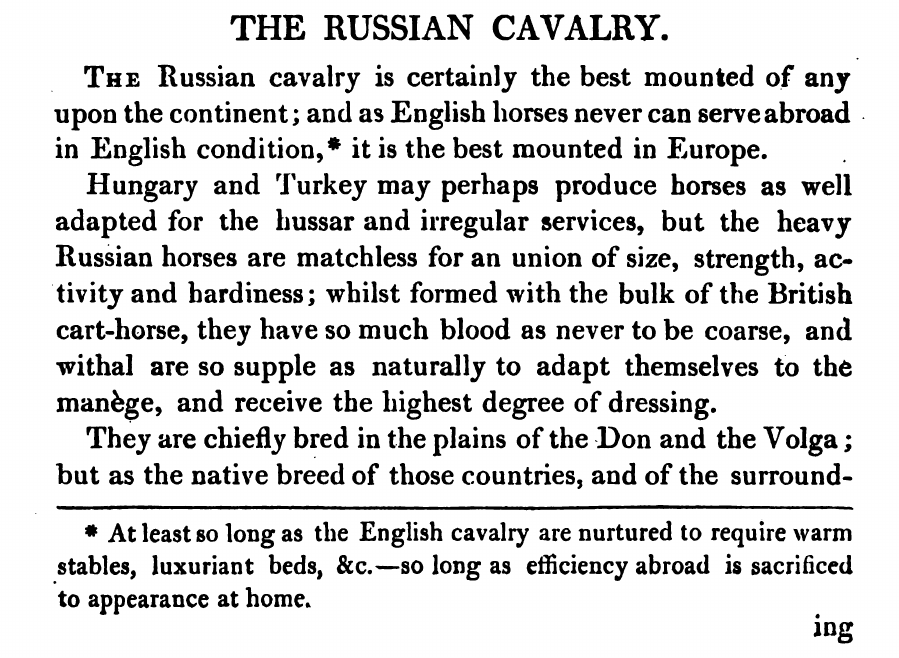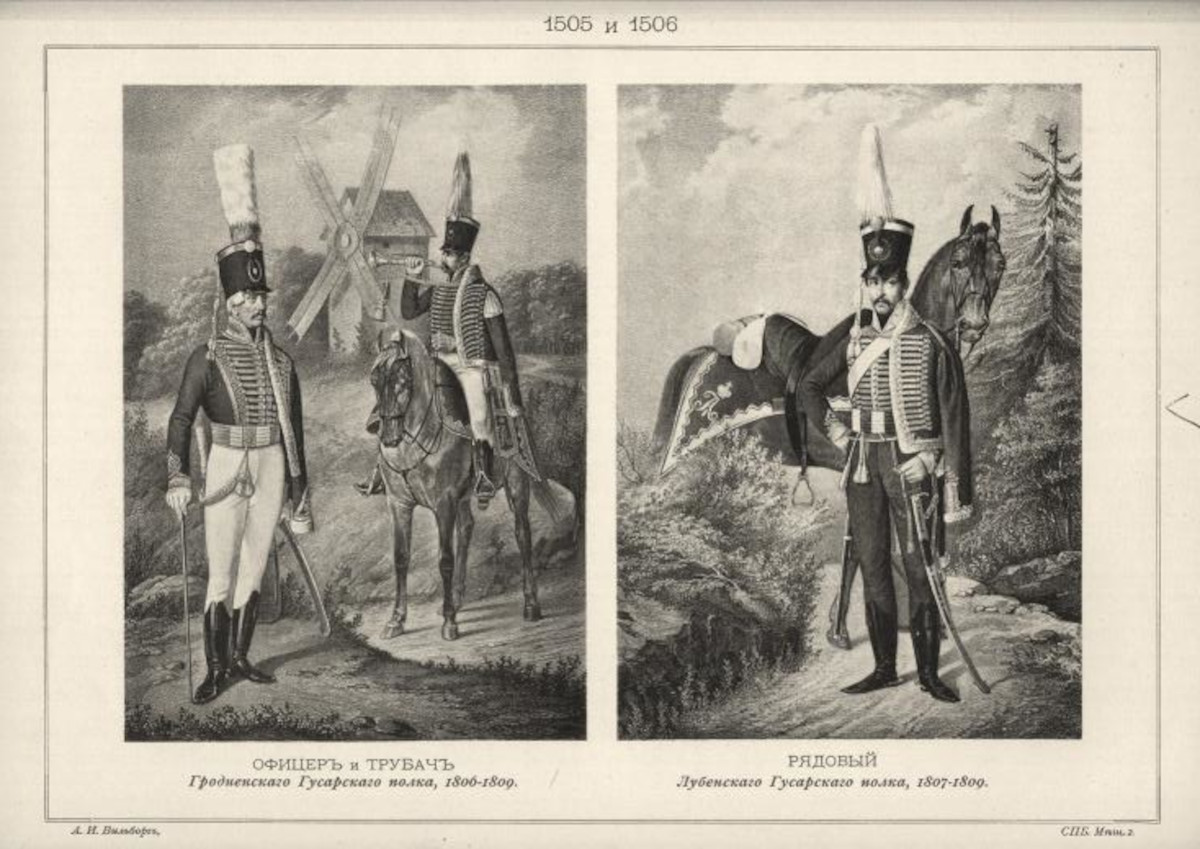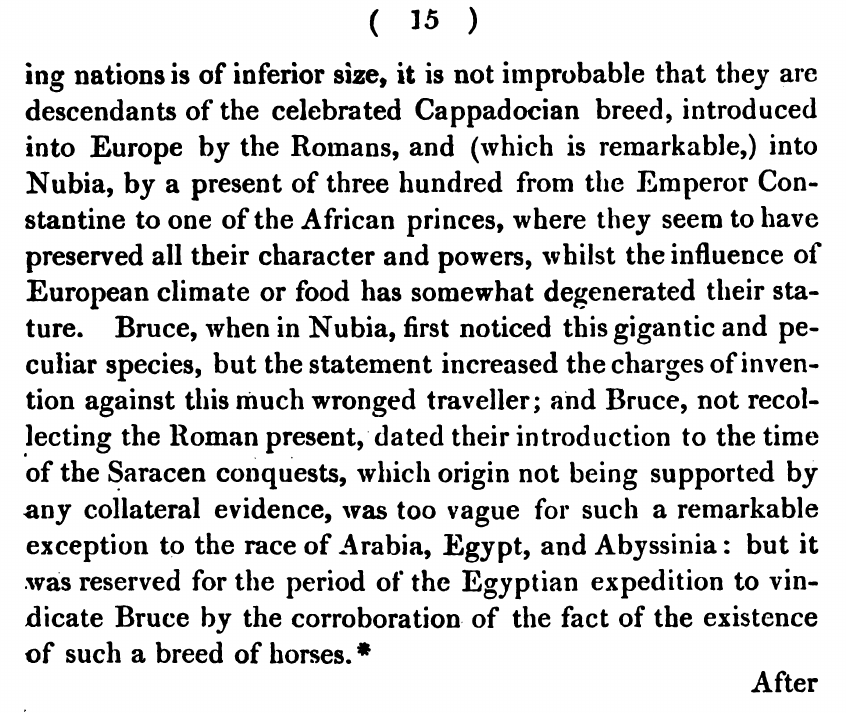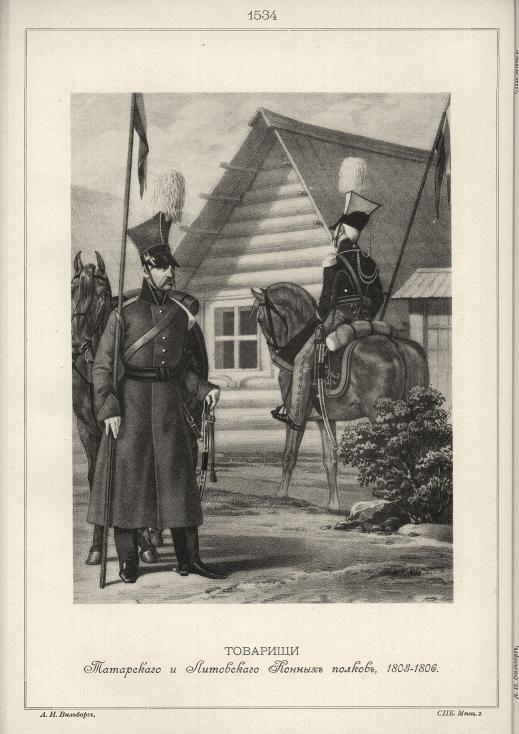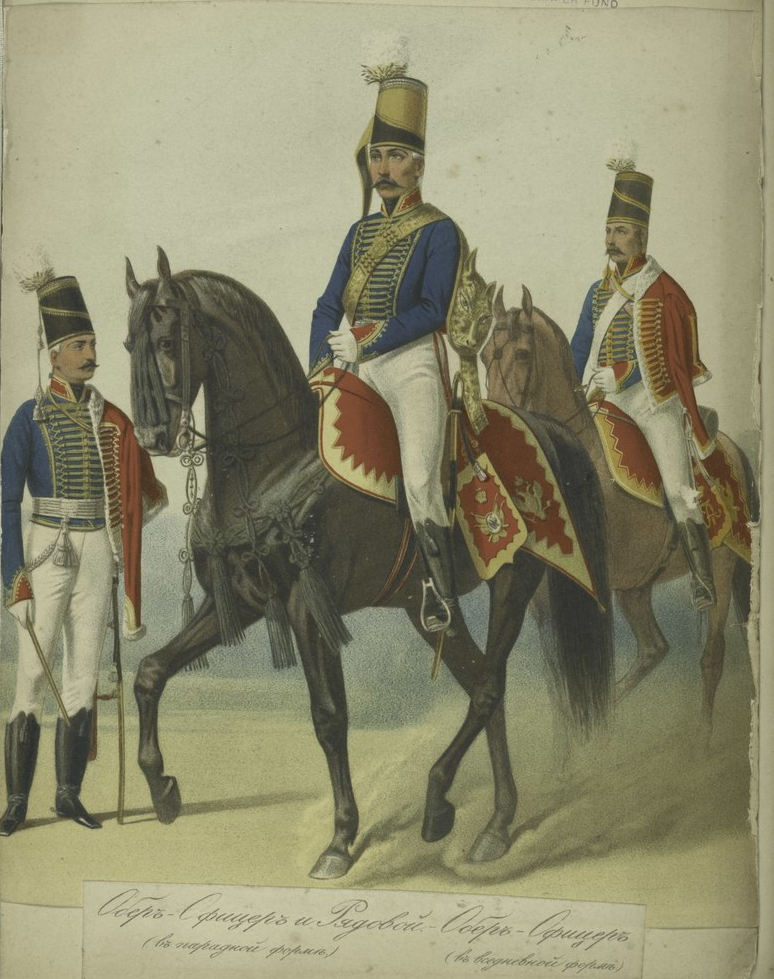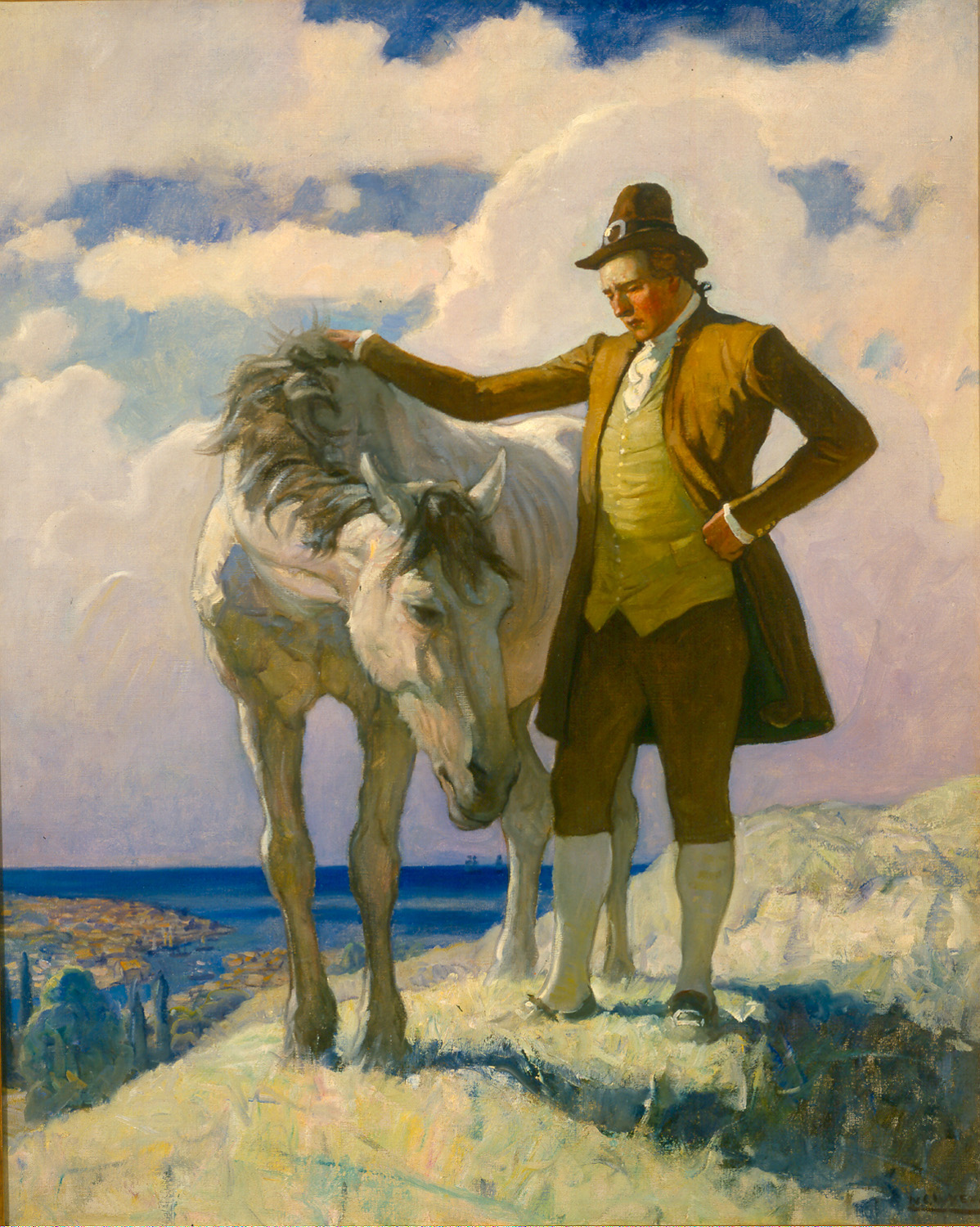Salvete Omnes,
long time ago I bought a book on the Russian Cossack irregular cavalry during the Napoleonic wars, and looking for some information I checked whether this particular primary source - Brief remarks on the character and composition of the Russian army, and a sketch of the campaigns in Poland in the years 1806 and 1807 - cited in there was available on line.
 |
| A. V. Viskovatov - Istoricheskkoe opisanie Odezhdi i vooruzheniya Rossieskikh |
Thankfully there are many sites where you can read or download to read this 1810 source by Robert T. Wilson. My favorite is world library Archive - here you can have the link.
 |
| Wiktor Mazurowski *- Friedland |
From this book I corralled for you general Wilson's remarks on the Russian regular cavalry from his book, describing the splendind qualities of the Russian army horses, comparing them with the period British horses when on campaign:
.
.
.
.
.
.
*Wiktor Mazurowski (1859-1944) was a Polish painter of battles and war, educated in the atelier of Wojciech Gerson in Warsaw, active in Russian Poland and after 1918 in the independent Poland. In 1944 during the Warsaw Uprising 85 years old maestro Mazurowski was murdered, along with his wife Zofia, by the German SS unit.
Valete


